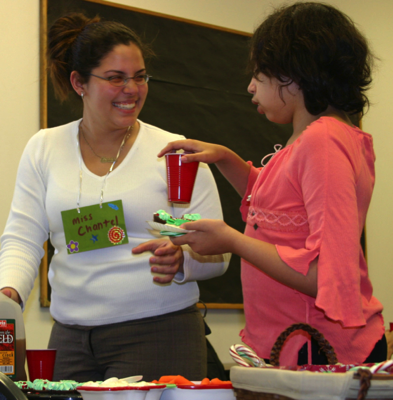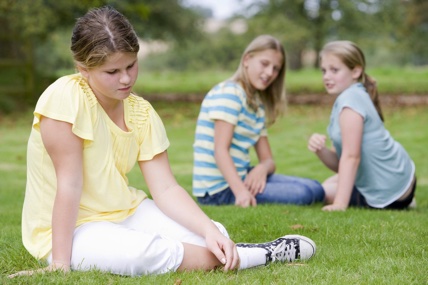

For girls and boys, relationships with peers can influence overall physical and mental wellbeing. We know that in and out of school, youth who are connected and have a network of support tend to thrive, while those who feel friendless and disconnected don’t. RA or relational aggression is a behavior that can fracture friendships, divide students into groups, and isolate individuals.
What Is RA?
All too often, relational aggression isn’t considered to be a form or bullying, even among school personnel who may dismiss it as teasing or being picked on. Further, many adults think RA isn’t as destructive as the physical attacks that can occur between youth, and make comments like: “They’re just jealous,” or “That’s the way girls are.” Make no mistake about it, though: RA is a form of violence with both short and long lasting consequences.




Girls & Relational Aggression
Do Boys Use RA?
I’m certainly hearing more stories about this, whether it be one boy abusing another because he’s so “gay,” a girl aggressing against a boy for various romantic or social reasons, and boys using behaviors that would be considered rampant sexual harassment in the adult world. (“They snap our bras and no one does anything about it,” one girl told me.) In general, there are some differences with boys: they do tend to use physical aggression more often to express anger or upset, and usually as an act of impulse. Boys also aren’t as likely to use RA on their close friends, and they seem to be less wounded by the sting of these behaviors.
Who Gets Involved?
Inevitably, there are always a few parents who tell me: “I’m so thankful. My daughter isn’t involved in this kind of behavior.” Ironically, I’ve yet to meet a girl who doesn’t know what RA is! Just because a girl isn’t in the midst of a word war doesn’t mean she isn’t impacted by a tense environment where RA is S.O.P. (Standard Operating Procedure).
The usual roles involved in this dynamic include the aggressor(s), victim(s), and, bystander (s) (one or more girls who witness the aggression-they may do nothing, or they may encourage it with snickers and nods.) These roles can change constantly, though, and in any school, athletic team, or organization, RA exists on a continuum of “very rare” to “constant.”
Rather than viewing children as relationally aggressive or not, it’s more realistic to expect that most children will use some form of RA during their school years, but there are students at either extreme: always aggressive or the constant victim. These are the girls I worry most about, because I know they grow into young women with unhappy lives.
What Are the Consequences?
RA has both short and long term consequences for all involved. Whether a girl is the aggressor, victim, or bystander, the most immediate reactions are acute loneliness, depression, and anxiety. As one bystander commented, “I mean, I stood there and listened to my so-called friends harass another girl in our class, and I wondered if some day I would be next.”
Sometimes, RA can lead girls to lose interest in school, change schools, or drop out of school. Depression, eating disorders, and somatic complaints like headaches and stomach aches have all been linked to being part of RA. In a few tragic situations, suicide has been the end result for girls who couldn’t find any other way to cope.
The Good News!
There are many reasons to be encouraged about girls since studies show the natural tendency of women is to be nurturing and caring. My work with thousands of young women leads me to believe that behavior can always change for the better, and that, given the opportunity, girls really do want to be kind.
The Behaviors
Exclusion, gossip, using “code names” for other girls, trash talking about someone just loud enough to be overheard, jealousy, the “silent treatment,” coalition building and cliques, “takebacks” (saying something cruel and then pretending you were joking), humiliation, manipulation, and intimidation are just a few of the real time examples I hear about. Now, thanks to computers and cell phones, RA can be expressed virtually through blog postings, vicious text messages, and cruel IMs. This kind of RA is especially threatening because the whole world can witness it online, and the victim can’t be quite sure who is targeting her.
Why Does RA Occur Among Girls?
The earlier onset of puberty has certainly affected the way girls relate to each other. They compare bodies and evaluate attractiveness at younger ages, and may feel resentful and jealous about “boyfriends” in third and fourth grade. There are more violent female “role models” in the media and reality shows that encourage RA type behaviors. Even sports can be a source of RA behaviors as girls struggle to learn what true competition is all about. (Keep in mind that athletics have been part of boys’ lives for centuries, while Title IX has only been around for a few decades.)
